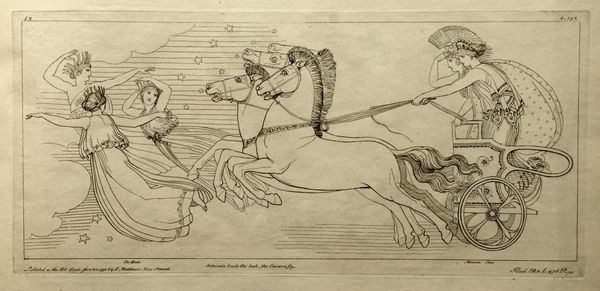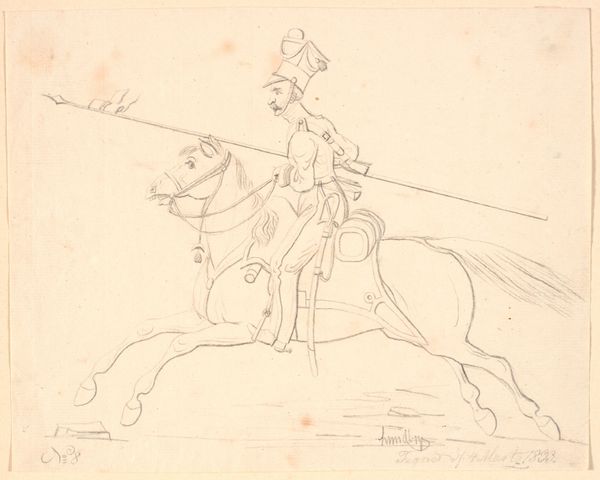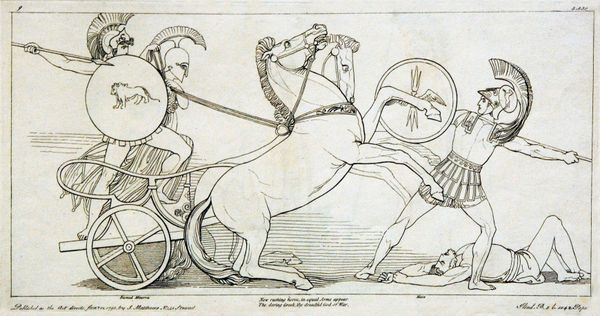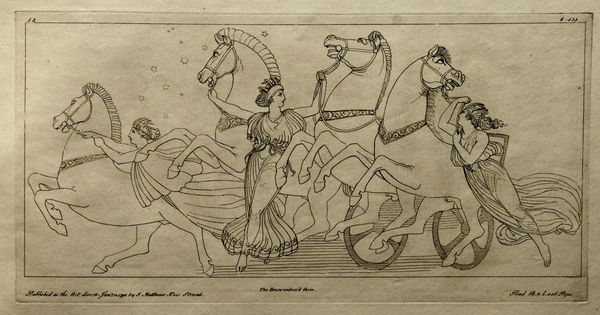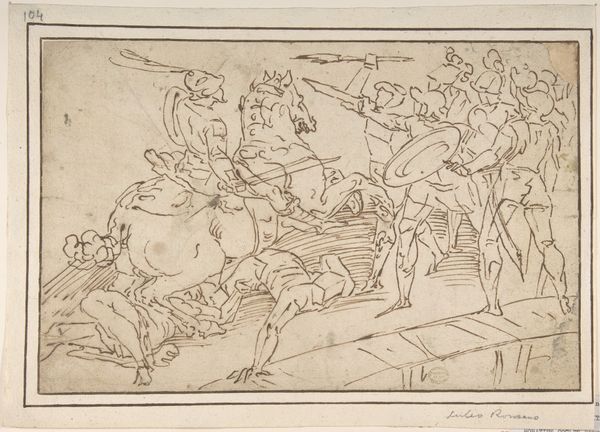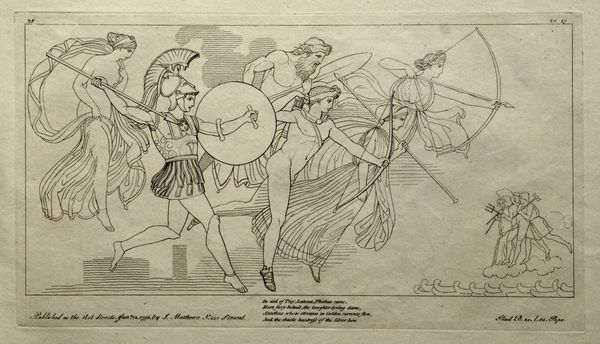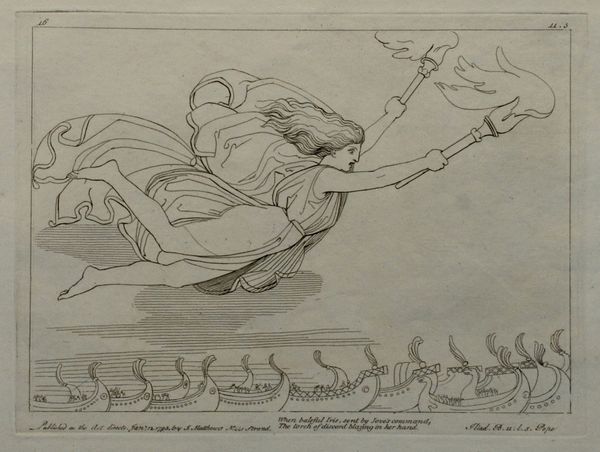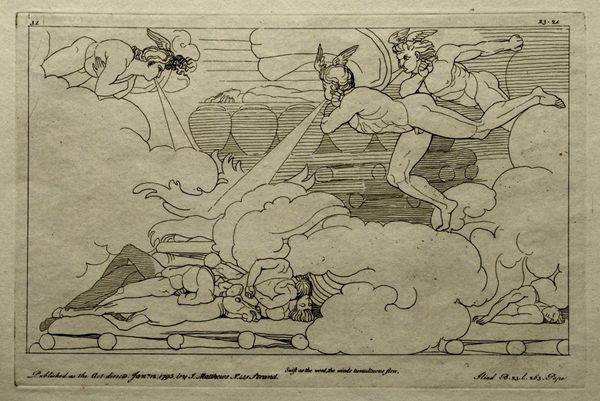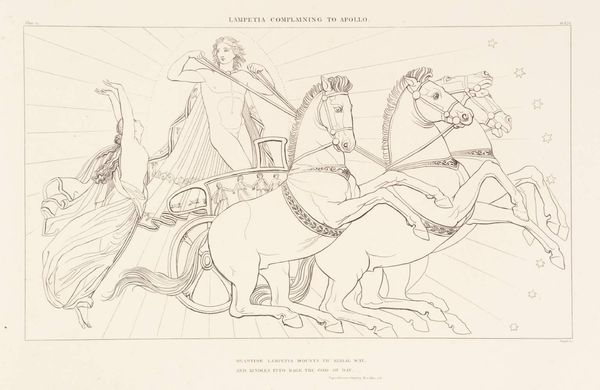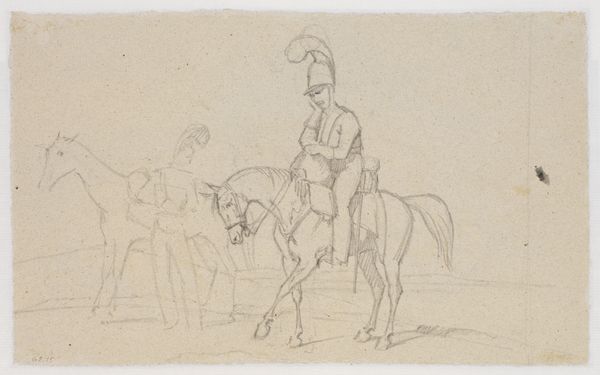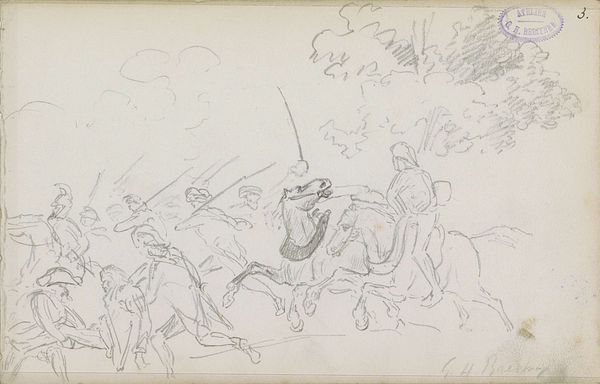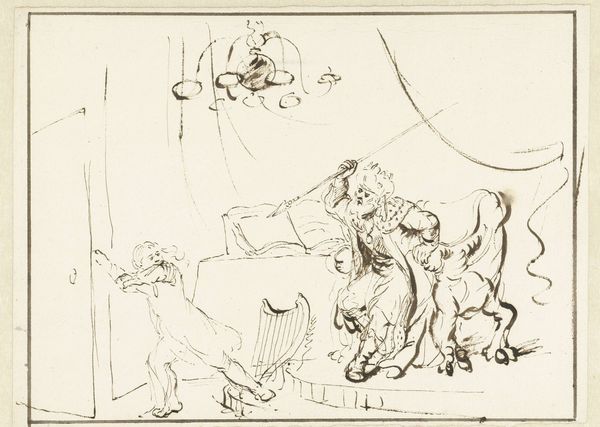
drawing, ink, pencil
#
drawing
#
neoclacissism
#
narrative-art
#
pencil sketch
#
figuration
#
ink
#
ancient-mediterranean
#
pencil
#
line
#
history-painting
Copyright: Public domain
Editor: Here we have John Flaxman's "Illustration to the Iliad," made in 1795 using ink and pencil. It's a striking image, and the first thing I notice is its clean, almost austere lines, giving it a feel of ancient sculpture. How do you interpret this work within its historical context? Curator: It’s crucial to consider how Flaxman engages with the Homeric epic. Flaxman, a prominent figure in Neoclassicism, positions the ancient world through the lens of his time. This wasn’t just about illustrating a story; it was about reclaiming an imagined past to comment on contemporary society. How do you see this image contributing to ideas about heroism or war, considering late 18th-century anxieties? Editor: It feels very…controlled, almost bloodless. The violence of the Iliad seems filtered through this very refined aesthetic. Was that a conscious decision, a way to idealize conflict? Curator: Precisely. Neoclassicism often used classical subjects to promote ideals of order and reason, frequently masking complex and contradictory realities. Flaxman's depiction, with its emphasis on line and form, could be viewed as a strategy to sublimate the brutal realities of war into something more palatable and morally instructive. This relates to power structures; how narratives can sanitise certain realities for cultural purposes. Do you see connections to how we currently deal with historical events or monuments? Editor: I guess there’s always a negotiation about what to show, and how to show it, isn't there? I mean, the composition's lack of dynamism definitely makes the scene less visceral. Curator: Exactly, and that 'lack' speaks volumes about the artist's choices and the expectations of his audience. Understanding these filters allows us to critically engage with history rather than passively consume it. Editor: I've never really thought about neoclassicism like that! Thanks for sharing this perspective. It’s completely changed how I see this drawing. Curator: And seeing it differently is the entire point! These works aren't just aesthetic objects, they're cultural artifacts, laden with meaning and ripe for interrogation.
Comments
No comments
Be the first to comment and join the conversation on the ultimate creative platform.
